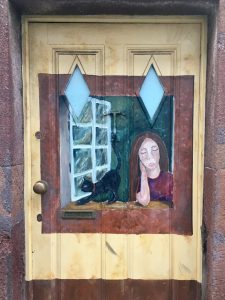
In the age of social media, it’s the image that rules. Instagram is the perfect example: It not only feeds some people’s insatiable need to document and offer glimpses into their private lives but also caters to a certain audience’s desire to consume and experience these slices of life vicariously. Instagram refers to the images posted as “stories,” a designation that fits in perfectly with the proverb: Every picture tells a story. And stories are almost always subject(ed) to interpretation. In the case of these Instagram picture stories, often the only clue is a brief caption or hashtag.
But what if the focus were to be shifted and that proverb were to be reversed?
Then every story would tell a picture. So instead of telling a story with a picture, the story recounted would give rise to an image. This is exactly the type of alchemy needed to create a vignette – the word many a literary critic has used to refer to Sandra Cisneros’ imagery-infused, concisely crafted, and emotionally evocative pieces in her ‘novel,’ The House on Mango Street. For the author herself never classified this work as a collection of vignettes or even a novel, preferring to view these “little stories” as “a jar of buttons, like the mismatched embroidered pillows and monogrammed napkins I tugged from the bins at the Goodwill” (The House on Mango Street, xv-xvi).
Yet, somehow the term “vignette” fits in with my personal take on vignettes. The word originates from the French and means “little vines,” referring to illustrations found along the page borders used to mark beginnings or ends of chapters in 18th century novels. Later on, this technique was used in photography to create a subtly darker frame around a photo as a way of highlighting the central image. Yet, not until the 19th century was the term used to describe a literary sketch – akin to a slice of life or prose poem – one that did not focus on plot, but instead created a distinct impression of a character, setting, or even an object. So, in my view, there is a link between the verbal and the visual in vignettes as the right words bring an image or images to life similar to a photograph being developed before your eyes in the dark room.
Those who love writing poetry and lyrics should have no trouble penning a vignette. But if you are the plot-driven type of writer, the vignette might present you with more of a challenge. As an example, I’d to take my favorite vignette from The House on Mango Street:
A House of My Own
Not a flat. Not an apartment in back. Not a man’s house. Not a daddy’s. A house all my own. With my porch and my pillow, my pretty purple petunias. My books and my stories. My two shoes waiting beside the bed. Nobody to shake a stick at. Nobody’s garbage to pick up after.
Only a house quiet as snow, a space for myself to go, clean as paper before the poem. (The House on Mango Street, 108)
This little piece might seem like a simple construction, but such concision requires revision. So, what are the ingredients needed to create that alchemical moment in a vignette of your own? Here are my suggestions:
- Capture a moment, don’t create a plot line.
The narrator doesn’t focus on telling you how she will find a house of her own, but by describing what it is and what it isn’t.
- Select a setting that reveals something about the character.
The setting cries out for solitude (“two shoes waiting beside the bed”) and beauty (“my porch and my pillow, my pretty purple petunias”) – the environment the protagonist needs for writing.
- Like an impressionistic painting, use blurred dabs of color to create a character sketch.
The protagonist is clearly an independent and emancipated woman who doesn’t want “a man’s house” or “a daddy’s” or men she needs “to shake a stick at” or whose “garbage” she has to “pick up after.”
- Use imagery that appeals to the senses to turn your story into a picture – and in Cisneros’ case – preferably mixed-up sensory images.
Usually a visual or haptic image of snow is evoked: its whiteness, its soft yet cold texture. Here, however, an auditory image is provided: “a house quiet as snow.” The physical space of the actual house as well as the mental space for creativity demand emptiness so that they may be filled, “clean as paper before the poem.”
- As in a poem, rhythm is key – vary sentence structure and use fragments:
This piece is composed solely of fragments, imbuing it with its own unique rhythm.
Curious about trying your hand at a vignette now? These are just the “how-to-vignette” guidelines. For the “why-to-vignette” guidelines, take a peek at “We Need a Break or We’ll Break.”
23,878 Total Views, 3 Views Today






